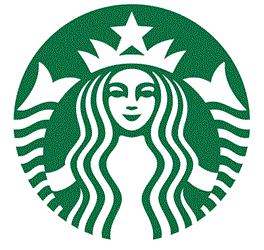Restaurant And Hospitality News – February 29, 2016

By Christine Kern, contributing writer

In news this week, changes to Starbucks’ loyalty program have customers fuming; the NRA project records foodservice sales for 2016; and some tips for bolstering cybersecurity training for hotel employees.
Starbucks Changes To Loyalty Program Leave A Bitter Taste In Some Customer’s Mouths
Starbucks has announced changes to its rewards program that have left some customers with a bitter taste in their mouths, according to Consumer Goods. In April, the coffee chain will shift its program from earning one star per visit, regardless of amount spent, to earning two stars per dollar spent. That means that gold members will earn a reward after they accumulate 125 stars. Matt Ryan, Starbucks global chief strategy officer, told Wall Street analysts that the changed resulted from customer demand. He said it was the No. 1 request from its loyalty club members, which includes some 11 million individuals.
Ryan also acknowledged that the change was designed to counter transaction splitting, since some customers were asking baristas to break their purchases into multiple transactions to reach their rewards goals faster. This practice slowed service and extended transaction time, Ryan explained, and an estimated 1 percent of loyalty transactions included such splits. The change is also expected to increase average check size, since customers need to earn more rewards points before redeeming for free product. “Customers, because they’ll earn more, they’ll spend more,” explained Scott Maw, Starbucks chief financial officer.
Later this year, Starbucks is also expected to build on partnerships that allow loyalty members to earn Stars outside the coffeehouse chain. Members can earn rewards for subscribing to The New York Times, for example, using the ride-sharing program Lyft or downloading music through Spotify.
Whether customers are happy about the new loyalty initiative or not, Starbucks says this is just the beginning. "We will be sharing updates and ideas on how we plan to make our rewards program even more rewarding for all members in the near future," wrote Aimee Johnson on the Starbucks blog.
NRA Projects Record Sales In 2016
According to the National Restaurant Association, foodservice sales in 2016 will grow 5 percent to $782.7 billion as a result of improved finances, an improved economy and lower gas prices. When adjusted for inflation, that increase marks a 2.1 percent jump over 2015, marking the first time in over ten years that industry sales rose by more than 2 percent in adjusted terms in consecutive years. The NRA also projects that the growth will be evenly split across full-service and limited-service restaurants.
The positive outlook and the recent addition of jobs does not mean that there are no challenges for the industry, however. Though the overall economy is trending in the right direction, the operating environment isn’t without challenges going into 2016,” Hudson Riehle, senior vice president of research for the restaurant association, said in a prepared statement. “With overall tightening in some labor markets, we’re seeing recruitment and retention making a comeback as a top challenge for restaurant operators.”
Full-service restaurant sales are expected to grow 4.9 percent, or 2.1 percent when adjusted for inflation, to $259.2 billion from $247.1 billion a year ago, while quick-service restaurant sales are expected to grow faster, at 5.9 percent or 2.7 percent adjusted for inflation, to $223.3 billion from $210.9 billion a year ago, according to the forecast.
Tips For Bolstering Hotel Employee Cybersecurity Training
In the wake of unprecedented cyberattacks against the hotel industry in 2015, many hoteliers are now looking for ways to ramp up cybersecurity training of their employees to counter future attacks. This article from Hotel News Now offers five concrete steps that can help bolster your employees’ readiness to stave off a cyber threat. Management should clearly define employee policies and procedures in order to prevent breaches. These include:
- Creating protocols for access and transfer of sensitive information. Only certain individuals should have access to the secure IT network, and that access should be monitored with insider threat detection solutions.
- Confirm that off-site technology is secure. This means checking the security of all data housed off-site, including Web application firewalls and installing anti-malware software.
- Securing paper files that might include personal information. Employee files need to be protected, since they could also be targeted in a breach. Employee files are often targeted for their HIPAA protected medical information, which has great value to hackers.
- Ward off ‘spear-phishing’ tactics. Educate your employees regarding common tactics used by cybercriminals to gain access to the system. Employers should establish clear policies and procedures to inform employees about common scams and set in place a methodology to handle suspect correspondence.
- Create a workplace culture with a strong emphasis on privacy and data security. Instill a sense of responsibility in your employees regarding cybersecurity. Properly train them to be mindful of potential risks.
